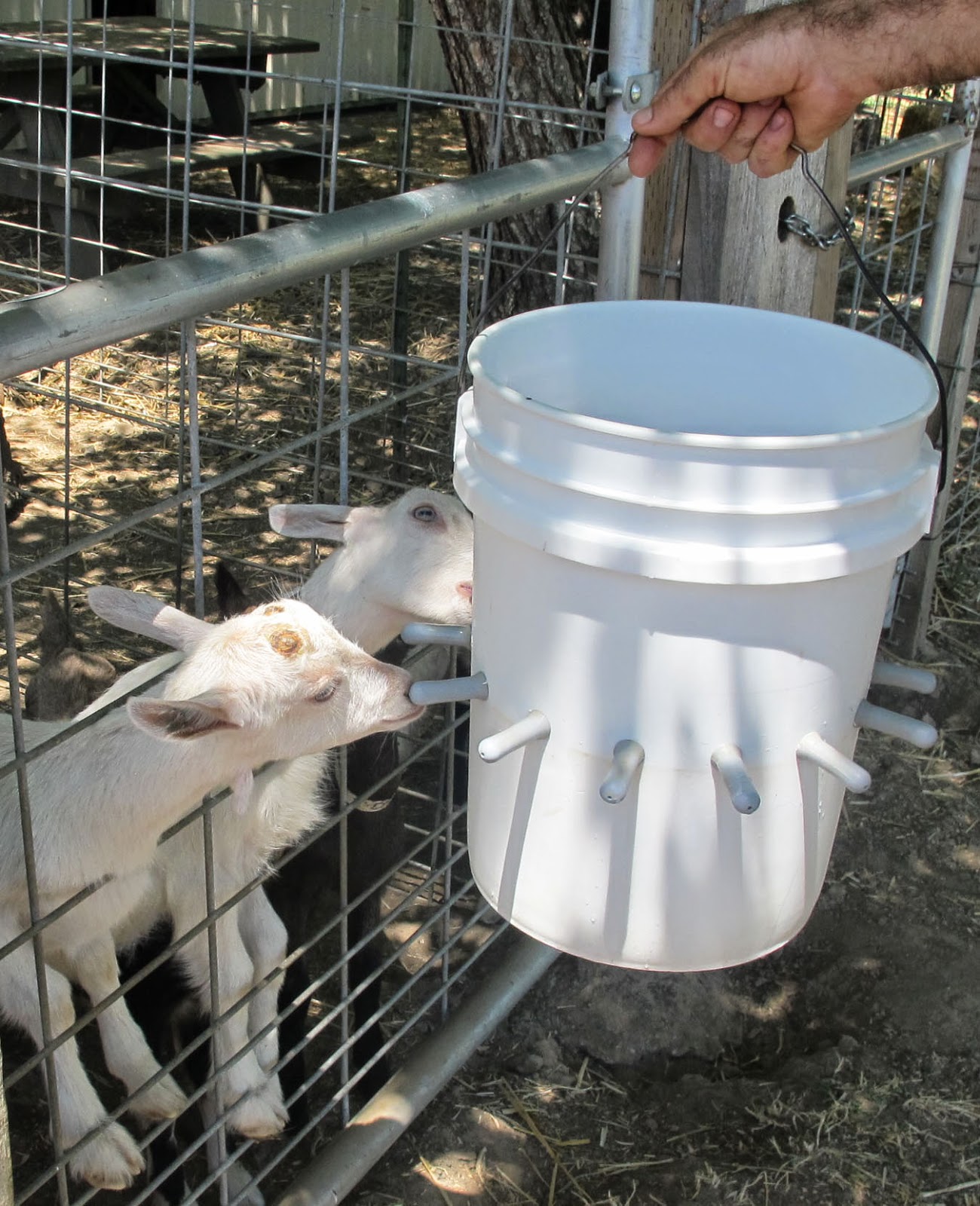There is no sweeter thing than playing with baby animals. Especially if those babies are as young as four days old.
I am visiting Redwood Hill Farm in Sebastopol. Redwood Hill is the first Certified Humane goat dairy in the country and is the where the goats are bred and raised for Redwood Hill Farm goat milk products: cheeses, yogurts, and kefir. And it happens to be birthing season! Baby goats galore!
 |
| 4 days old! |
In Part 2 I will talk about my visit to the creamery, but it all has to start with the goats. There are about 300 of them at the farm consisting of four different breeds. Along with farming the goats for their milk, Redwood Hill also takes them to national shows and often wins awards for best examples of the breeds. Scott Bice, the youngest sibling, gave me a tour of the farm and points out the four breeds...
- Nubians are bred from a mix of Indian and African breeds and have the highest butterfat. They are the ones with the floppy ears.
- Saanens are the all white ones from Swiss ancestry and give the highest quantity of milk.
- Alpines came from France and have different colors, upright ears, and also give a lot of milk.
- The La Manchas are obviously of Spanish descent and are the ones with no ears.
 |
| nursing bucket |
The milk is produced, of course, because the does have gotten pregnant and given birth. Unfortunately they don't ever get to be mothers. The babies are taken away immediately and hand raised from then on. Scott explains they do this for the health of the babies. The most concerning disease that the kids can get comes from the milk, Caprine Arthritic Encephalitis (CAE). For this reason, all the milk is first pasteurized before it is given back to the kids. Of course the very first milk after birth has the all important nutrients in the colostrum. Once it is pasteurized, that is given back to the kids as soon as possible. After that the kids are fed a mixture of pasteurized milk and yogurt.
I asked Scott if there is depression from this mother/baby separation at birth. He says the kids don't know any better and now are completely dependent on the human caretakers. The does cry out for the babies the first day, but soon lose any memory of the experience. The does are kept on one part of the farm and the kids now have a new barn area of their own on the newly acquired land next door.
 |
| No horns for me! |
It will take the kids about five weeks to be weaned. The males are separated out and many of them are sold as breeding sires to farms across the United States. Scott pointed one out that was about to be shipped to Mexico.
It will be about 15 months before a doe is old enough to be bred. The peak milking years will be 3-5, but some can last as long as about 10 years. At Redwood Hill, these goats get to live a happy life of retirement.
Scott shows me the milking facility. The does are milked twice a day, twelve hours apart. They can milk ten goats at one time. The teats are dipped into an iodine sterilizing solution and then a squirt from each teat goes into a cup so they can examine it. Does the milk look healthy? Are there any traces of blood? If everything looks good, the doe is hooked up.
The milk goes through hoses overhead into the next room where the cooling vat is located. Scott explains that a lot of that funky goat taste comes from the milk not being chilled quickly enough. If it is immediately chilled, there's barely any discernible goaty taste. There will be about two days worth of milk in the vats before it is transported to the creamery for further processing.
And with that, it's time to follow the milk to the creamery....Part 2 .
Baaaa-ye!
 |
| twins |

.png)






